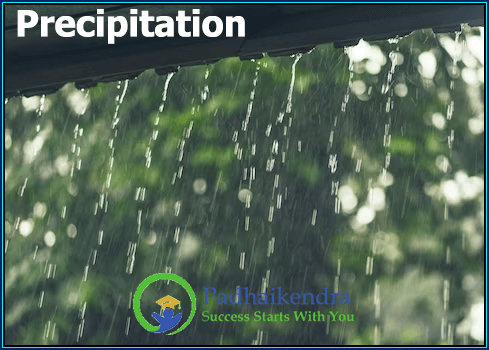Precipitation is a vital component of the Earth’s water cycle and refers to any form of water that falls from the atmosphere and reaches the Earth’s surface. This can include rain, snow, sleet, and hail. Precipitation is a critical source of freshwater for both human and natural systems and plays a crucial role in shaping the Earth’s landscape and ecosystem.
Precipitation occurs when moisture in the atmosphere condenses into droplets or ice crystals that become too heavy to stay suspended in the air. This can happen in a variety of ways, depending on the temperature and humidity levels in the atmosphere. In general, warmer air can hold more moisture than colder air, which is why areas with high temperatures and humidity are often associated with frequent precipitation.
The most common form of precipitation is rain, which occurs when water droplets in the atmosphere combine and grow large enough to fall to the ground. Snow is another form of precipitation that occurs when temperatures in the atmosphere are below freezing, causing water vapor to freeze into ice crystals that fall to the ground. Sleet and freezing rain are also forms of precipitation that occur when raindrops freeze on contact with the ground or other surfaces.
The amount and frequency of precipitation can vary greatly depending on a variety of factors, including geography, climate, and weather patterns. Areas near the equator, for example, often experience heavy rainfall due to their high temperatures and humidity levels. In contrast, deserts and other arid regions may receive very little precipitation, leading to drought conditions.
Precipitation plays a crucial role in shaping the Earth’s landscape and ecosystem. Over time, frequent precipitation can erode mountains and carve out canyons and valleys. It can also help to replenish groundwater reserves and support plant growth, which is essential for maintaining healthy ecosystems.
However, excessive precipitation can also lead to flooding, landslides, and other natural disasters. Climate change is also having a significant impact on precipitation patterns, leading to more frequent and severe droughts and floods in many parts of the world.
In conclusion, precipitation is a critical component of the Earth’s water cycle and plays a crucial role in shaping the planet’s landscape and ecosystem. While it is essential for supporting life on Earth, excessive or insufficient precipitation can have significant consequences for human and natural systems alike. By understanding the science behind precipitation and monitoring precipitation patterns, we can better manage this precious resource and mitigate the impacts of climate change.





